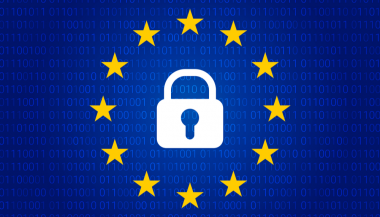Society has utilized a variety of methods to accomplish transactions throughout history. It was customary in ancient times to rely on eyewitness verification or seals to keep documents concealed until transferred. People employed marks or symbols to prove they had personally endorsed a document by the Middle Ages. Authorizing documents by spelling out a person’s name has become commonplace throughout time. For people who had a lot of paperwork to sign, the invention of a signature instrument, also known as an autopen, eased the process.
Let’s fast forward to the present day. Many firms have moved away from printed papers and headed toward digital counterparts, frequently kept in the cloud. Signatures have gotten more computerized as reports have become more electronic. You can now sign contracts and letters electronically rather than on paper. Let’s discover more about electronic signatures and their uses and benefits.
1. What Exactly is an Electronic Signature, often known as an e-Signature?
A person can use an electronic signature to give informed consent or signify that they approve the contents of a document. Electronic signatures, often known as e-signatures, can be valid and enforceable in various situations. E-signatures can take numerous forms, including typing the individual’s name, uploading an image of the person’s elegant signature, or drawing a signature on a tablet or smartphone screen. Electronic signatures employ digital identifiers to ensure that the person endorsing a document is precisely the real and right person.
2. Digital Signature vs. Electronic Signature
Although the phrases digital signature and an electronic signature may appear interchangeable, they are not the same and should not be mistaken. To put it another way, the difference between both is that not all electronic signatures come under the umbrella of digital signatures. In contrast, the entire types of digital signatures are categorized as electronic signatures.
A digital signature is typically safer than other sorts of electronic signatures. At its most basic level, an electronic signature allows someone to sign a document with their name on it. Digital signatures go one step further by validating that the person signing is who they believe they are. An individual must first give a type of certificate-based authentication before digitally signing something. A password or PIN must be provided, and the signer must have access to a unique code.
As a real-life example, after checking identity and establishing they are the person who should be signing, a notary observes a person signing a paper document. Digital signatures provide that additional layer of verification as notaries do.
3. It’s Similar to a Regular Signature but Enhanced & Secured
Electronic signatures have outperformed their paper counterparts. They’re lively, mobile, legally binding, and encourage us to reduce our carbon footprint. They’re also repeatedly backed up by technology that substantiates the signature’s genuineness.
3.1. Instant, convenient, and risk-free
Electronic signatures shorten the time to approve and sign documents by removing waiting periods. You don’t have to wait for the mail or get in your car to drop off documents when you use electronic signatures. Once you add your electronic signature to a document, you can proceed to the successive phase.
Signing documents becomes considerably easier with electronic signatures. Due to the portability of electronic signature systems, you may sign or request signatures from nearly anywhere on the planet, using whatever gadget you prefer. You are not required to print, sign, scan, and resubmit your document, nor are you required to own a fax machine only for the function of sending and receiving official paperwork.
3.2. Legally Enforceable
Electronic signatures have the same legal force as ink-based signatures. The Uniform Electronic Transactions Act (UETA), which authorizes electronic signatures, has been adopted by nearly all regions. Wills, for example, is one sort of document that no one can sign online.
3.3. Friendly to the Environment
It’s convenient to use the electronic signature, but it also decreases the adverse effects on the environment. Every new gadget you buy adds to your overall carbon footprint.
E-signature Applications and its Cases
There is no one-size-fits-all approach to using an electronic signature. The specifications vary depending on the type of electronic signature you use. However, they all work in the same way in most cases. When you need someone’s permission or agreement, you share your document with them, identify the zones that require signatures, and send the document to them.
It’s even simpler when you’re the signatory: open the document, sign all relevant fields, and submit. There are countless examples of electronic signatures being used in the real world today. To give just a few examples, consider the following:
- Electronic signatures are used in a variety of contracts. For instance, in labor, commerce, and administration, to name a few.
- To ensure that documents are received by their intended recipients. In this circumstance, advanced or qualified electronic signature solutions are required to offer unequivocal identification of the signatory.
- To carry out a variety of administrative operations in the public sector and private sector.
4. In a Nutshell
In summary, technical advancements in recent years have allowed for correcting some of the early forms of this tool’s drawbacks. As a result, widespread adoption of electronic signatures is already a reality in a rising number of domains and industries, and it hasn’t slowed in recent years.



